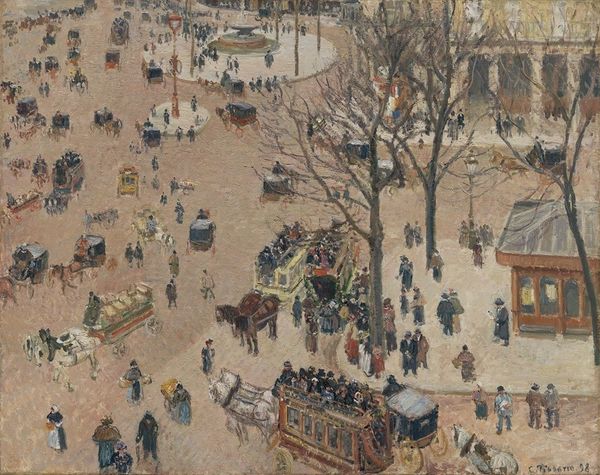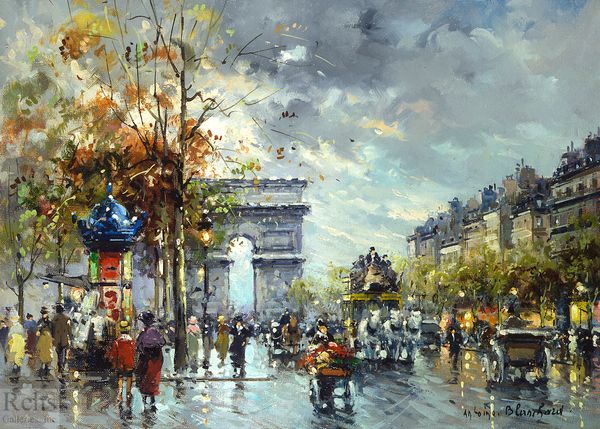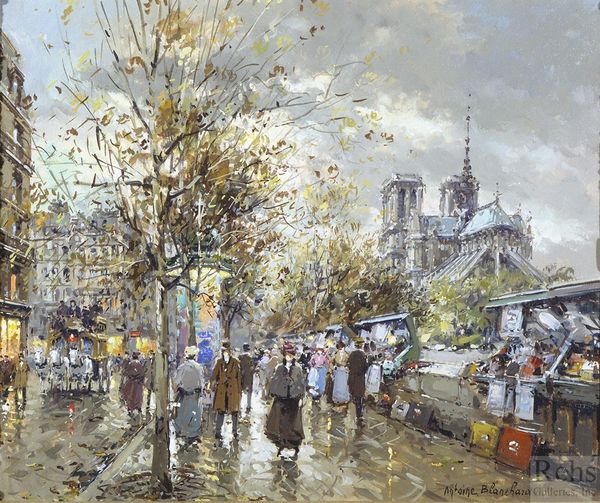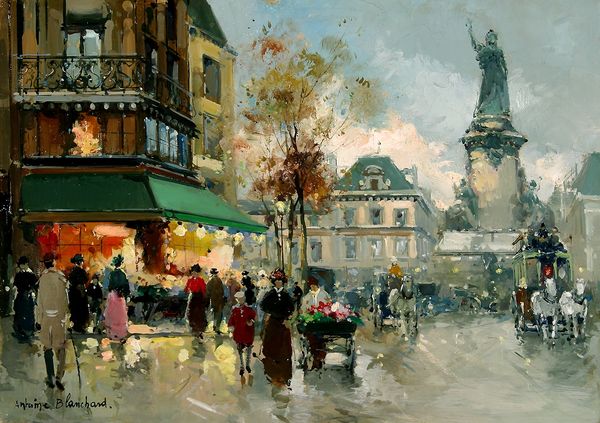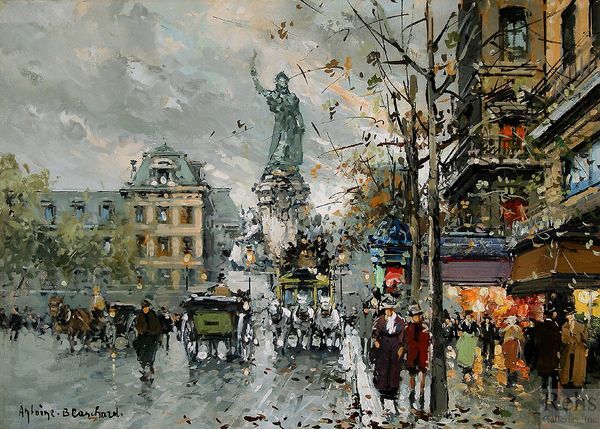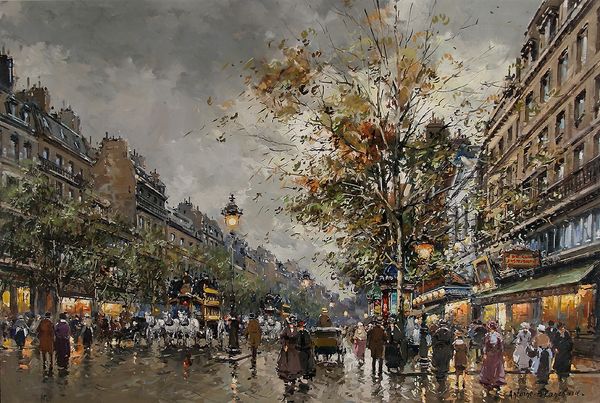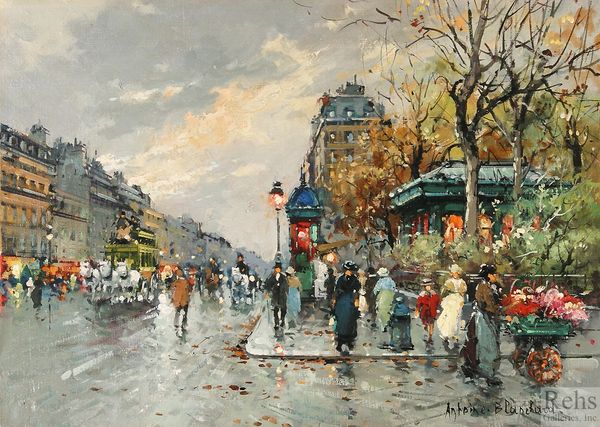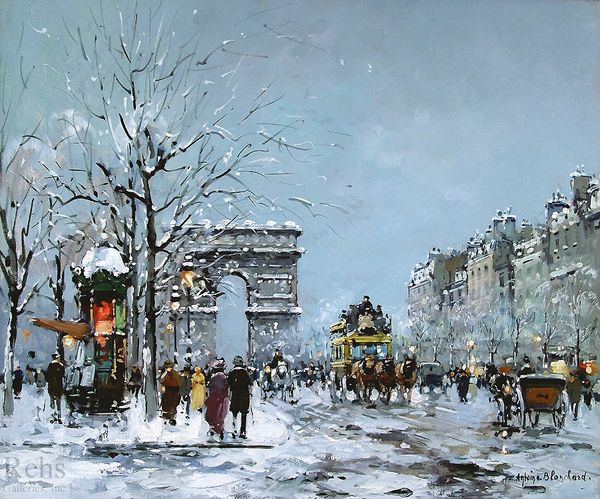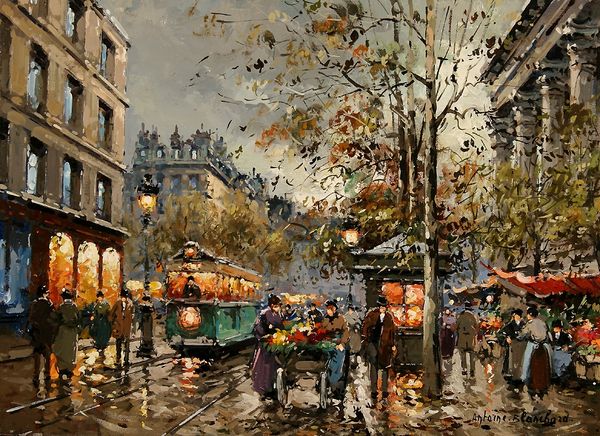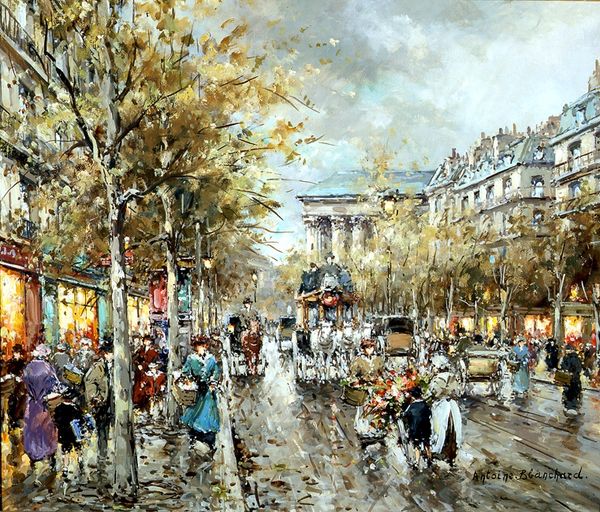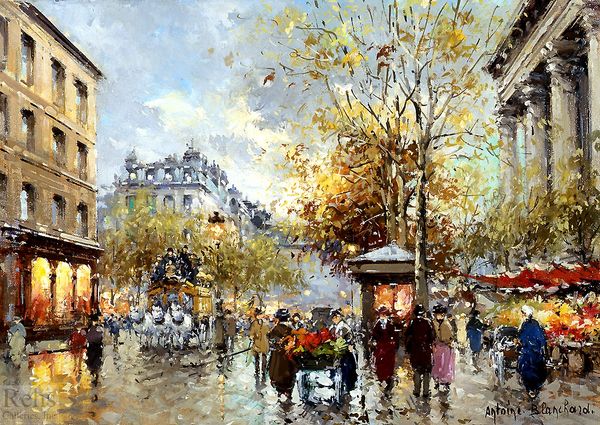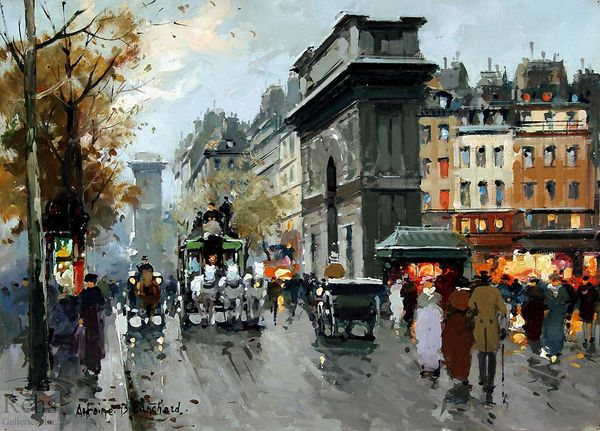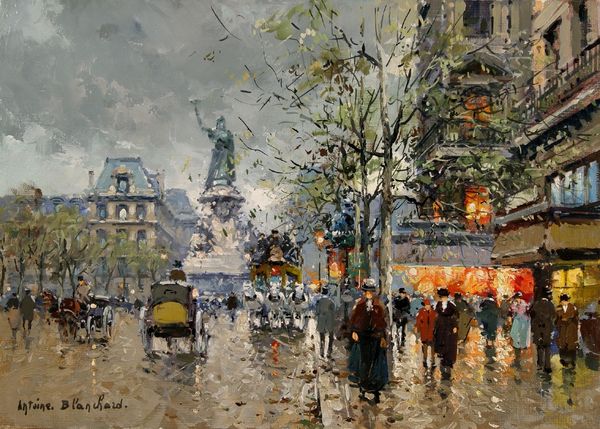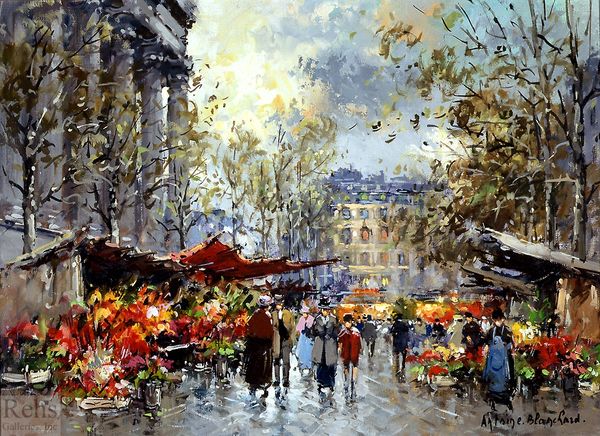
painting, acrylic-paint, architecture
#
narrative-art
#
painting
#
acrylic-paint
#
cityscape
#
genre-painting
#
architecture
Copyright: Hiro Yamagata,Fair Use
Curator: Hiro Yamagata’s “Concert In The Park” painted in 1983, is before us, depicting precisely that: an open-air concert in an urban park scene. Editor: It’s a burst of vibrant color. The scene almost has a vintage, childlike quality, with these playful, somewhat naive figures populating a very elaborate gazebo. There's almost an illustrative quality to the crispness and finish. Curator: Right, it's tempting to focus on the narrative aspects, a kind of idealized public space, but Yamagata, crucially, was exploring acrylic paints during this time. The smoothness of the finish speaks to the increasing sophistication and accessibility of this medium at the time. The painting really exemplifies how new material formulations influenced aesthetic approaches. Editor: I’m seeing almost mass production appeal in the clean lines and smooth surfaces. The rendering feels less focused on brushstroke individuality and more toward replicability, reflecting perhaps a changing art market. Also I would expect the use of tools such as airbrush or sponges on the surface, in the chromatic composition of the artwork, adding a touch of automation. Curator: That’s insightful. Given the rising popularity of laser technology for artistic use at the time, it brings to question whether Yamagata engaged with such techniques given this smooth facture. This kind of image helped democratize access to public enjoyment of artistic culture—affordable, aesthetically pleasing, and with wide appeal. Editor: I agree. The material choice underscores the piece's place within a broader shift toward the accessibility of art, and a move away from notions of ‘high art’ toward design for everyday life. It almost begs the question how an event of musical enjoyment gets reproduced, printed, and shared. Curator: Thinking about its historical setting of the early 80's, it underscores cultural moments like city festivals or town celebrations and their significance in community building, that became more common in later parts of the century. Editor: Seeing the scene depicted, rendered in what feels like industrially-produced paint really drives home the connection between public events and manufacturing. What a neat, slightly sentimental window on how both culture and its methods of fabrication shift and intertwine.
Comments
No comments
Be the first to comment and join the conversation on the ultimate creative platform.
